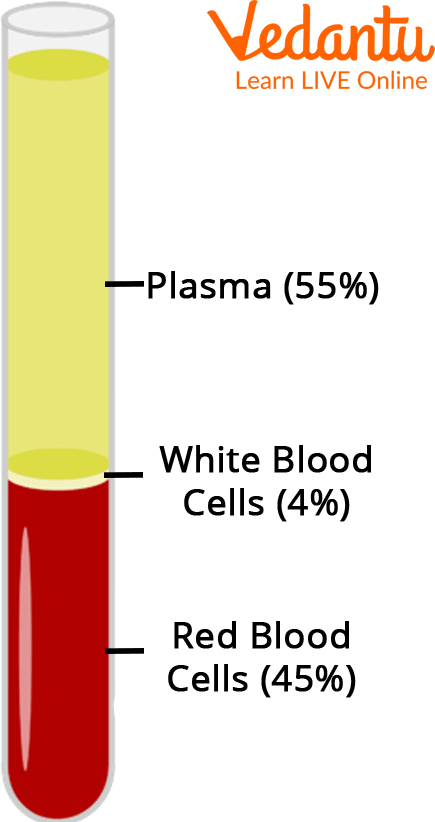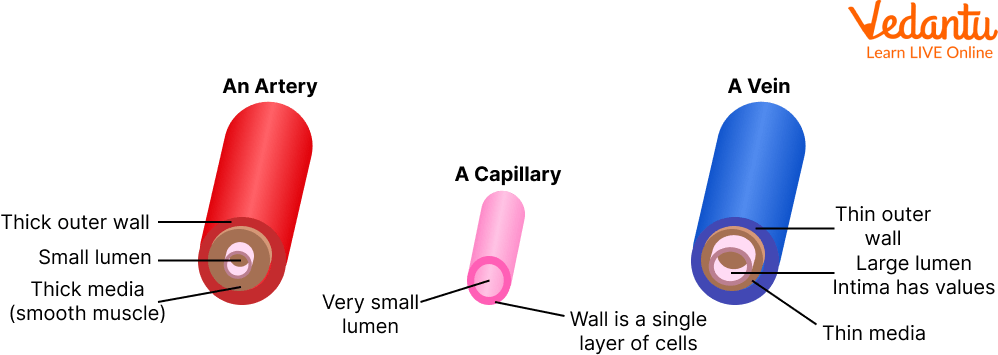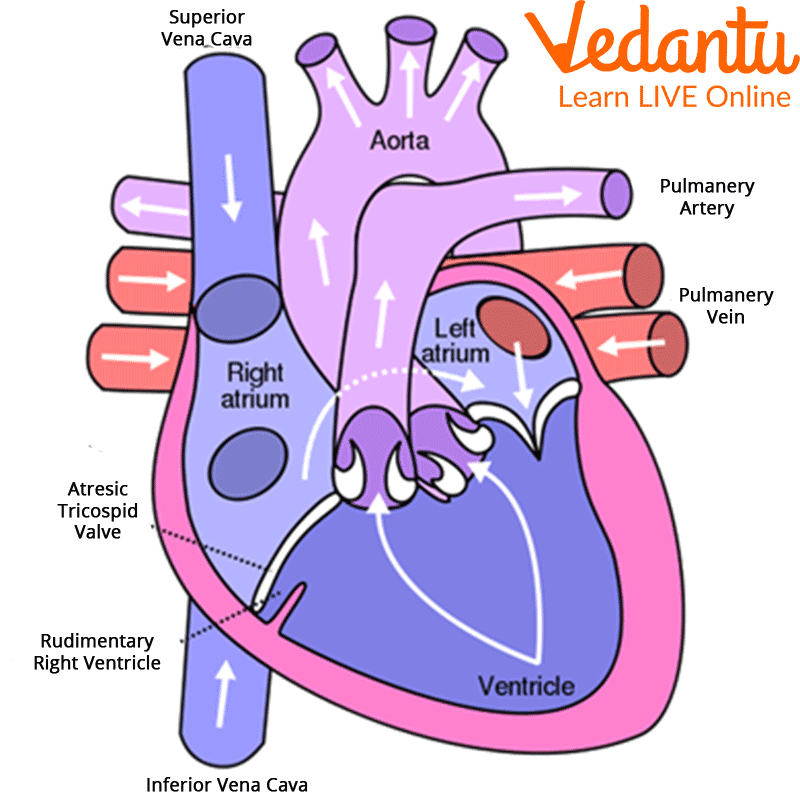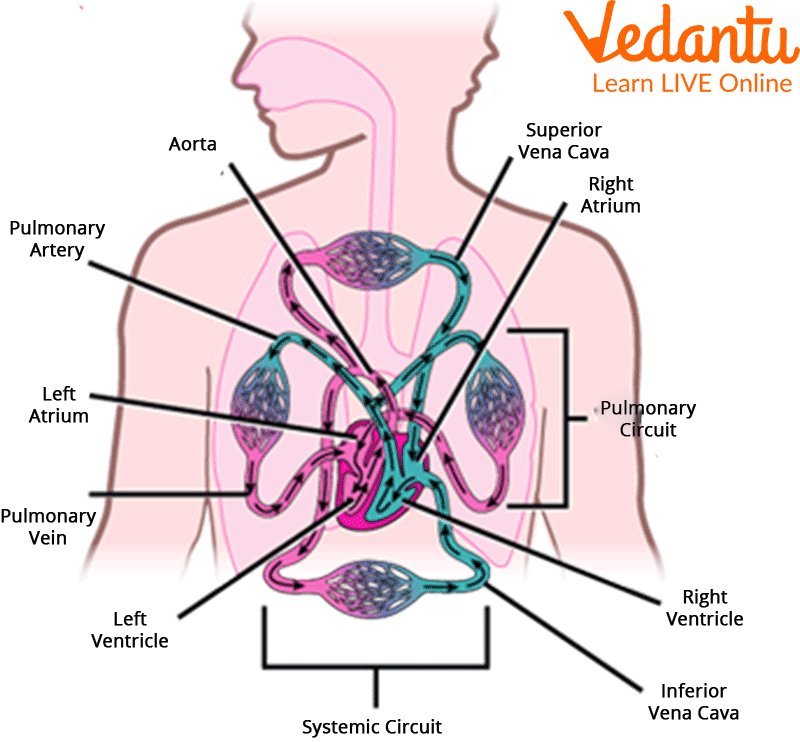




An Overview of the Human Circulatory System
Have you ever wondered how nutrients reach other parts of the body from the digestive system? Or how blood is pumped through the body? How does oxygen from the lungs reach all other cells in the body? All of this is possible due to the Circulatory System.
The circulatory system (cardiovascular system) is responsible for the transport of substances - nutrients, oxygen, carbon dioxide, and cellular waste material - throughout the entire body. The primary function of the circulatory system is to transport substances throughout the body via the blood pumped by the heart that flows into the blood vessels.
Three Main Components of the Cardiovascular System
Following are the three main components of the cardiovascular system:
Blood
Blood is a red-coloured liquid pumped by the heart and is responsible for the transport of nutrients and oxygen to all parts of the body and for collecting waste substances from certain organs. It is also responsible for fighting off infections.

The Composition of Blood
Red Blood Cells: These are red due to Haemoglobin. They are responsible for carrying oxygen throughout the body. They are produced in the bone marrow.
White Blood Cells: Also known as “soldiers of the body”. They help fight off infections. These do not have haemoglobin.
Plasma
Plasma is a yellowish fluid that carries nutrients, protein, hormones, and waste products throughout the body. The Blood Cells are also suspended in the plasma.
Blood Vessels
They create a closed system of tunnel-like tubes connecting the heart and body. They carry blood throughout the body.
Types of Blood Vessels:
Arteries - They carry oxygenated blood away from the heart to the rest of the body. As blood flows through them with a lot of pressure, they are thick and strong.
Veins - They carry deoxygenated blood from the body towards the heart. The blood flowing through them does not have a lot of pressure, so the veins are thinner. They contain valves to prevent the backflow of blood.
Capillaries - They are the smallest and the thinnest of all blood vessels. Since they are so thin, they allow easy exchange of material from the vessel to the organ. They are also responsible for connecting the arteries and the veins.

Structure of Arteries, Veins, and Capillaries
Heart Definition for Kids
Heart is made up of special muscles called Cardiac muscles. The heart is responsible for pumping blood throughout the body. It receives carbon dioxide-rich blood from the body and sends it to the lungs. It receives oxygen-rich blood from the lungs and sends it to the rest of the body.
It has 4 chambers - Right Auricle and Right Ventricle, Left Auricle, and Left Ventricle. These are separated by valves that prevent the mixing of blood.
The Deoxygenated blood enters the right-sided Auricle through the Vena Cava vein and is then pushed into the Right Ventricle from where it is carried to the lungs.
Oxygenated blood enters the Left Auricle and is pushed into the Left Ventricle. It is then pushed into the main artery called Aorta. The blood then reaches different parts of the body through smaller arteries.

Heart
Circulatory System for Kids
Circulation refers to the movement of blood and the transport of materials through the blood throughout the body. There are two types of circulation:
Pulmonary Circulation - This refers to the movement of blood between the heart and the lungs only. It is responsible for getting deoxygenated blood from the right ventricle to the lungs where the blood is infused with oxygen and CO2 is released. The oxygenated blood is then sent to the left auricle.
Systemic Circulation - This refers to the movement of blood between the heart and the rest of the body. The body receives oxygenated blood pumped out by the left ventricle of the heart, and all the deoxygenated blood from the body enters the right auricle.

Circulatory System
Interesting Heart Fact for Kids
While veins carry deoxygenated blood only, the Pulmonary vein is the only vein to carry oxygenated blood. It carries blood from the lungs to the left auricle of the heart.
While arteries carry oxygenated blood, the Pulmonary Artery is the only artery to carry deoxygenated blood. It carries blood from the right ventricle of the heart to the lung.
Summary
The circulatory system is vital for kids to understand, as it is responsible for delivering nutrients and oxygen to the body's cells. The cardiovascular system has three main components: the heart, blood vessels, and blood. The heart pumps blood through the vessels, which then carries oxygen and nutrients to the body's cells. Without a properly functioning circulatory system, kids would not be able to grow and develop properly. Understanding how the circulatory system works is important for maintaining good health.
FAQs on The Circulatory System for Kids
1. Why components of blood are important?
Plasma makes up the majority of the blood, up to 55%, and is responsible for transporting nutrients, protein, hormones, and waste products throughout the body, and all the blood cells are suspended in it. Blood cells include Red Blood Cells (Erythrocytes), White Blood Cells (Leukocytes), and Platelets. RBCs carry oxygen throughout the body, WBCs fight off infections, and Platelets are responsible for clotting blood.
2. Why are Platelets important? Where are they produced and where are they found?
Platelets are responsible for the clotting of blood. Whenever there’s a break in the blood vessel, platelets rush to the area and form a seal around the leak preventing loss of blood. If platelets did not exist, then there would be no clotting of blood and even small injuries could lead to major blood loss or even death. Platelets are produced in bone marrow, which is found in the centre of the bones. In the blood, platelets float in the Plasma.
3. What would happen without the circulatory system?
Blood delivers oxygen to all the body's cells. To stay alive, a person needs healthy, living cells. Without oxygen, these cells would die. If that oxygen-rich blood doesn't circulate as it should, a person could die.
4. What are the four main functions of the heart?
The four main functions of the heart are as follows:
Pumping oxygenated blood to other body parts.
Pumping hormones and other vital substances to different parts of the body.
Receiving deoxygenated blood and carrying metabolic waste products from the body and pumping it to the lungs for oxygenation.
Maintaining blood pressure.









